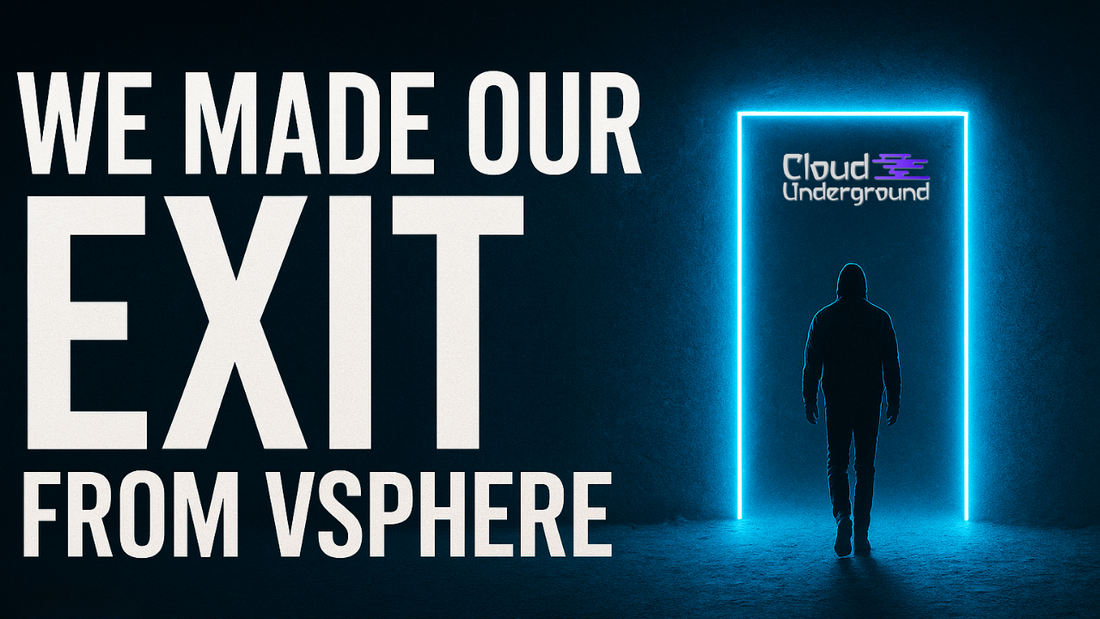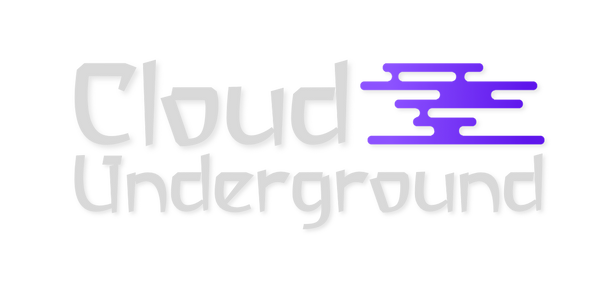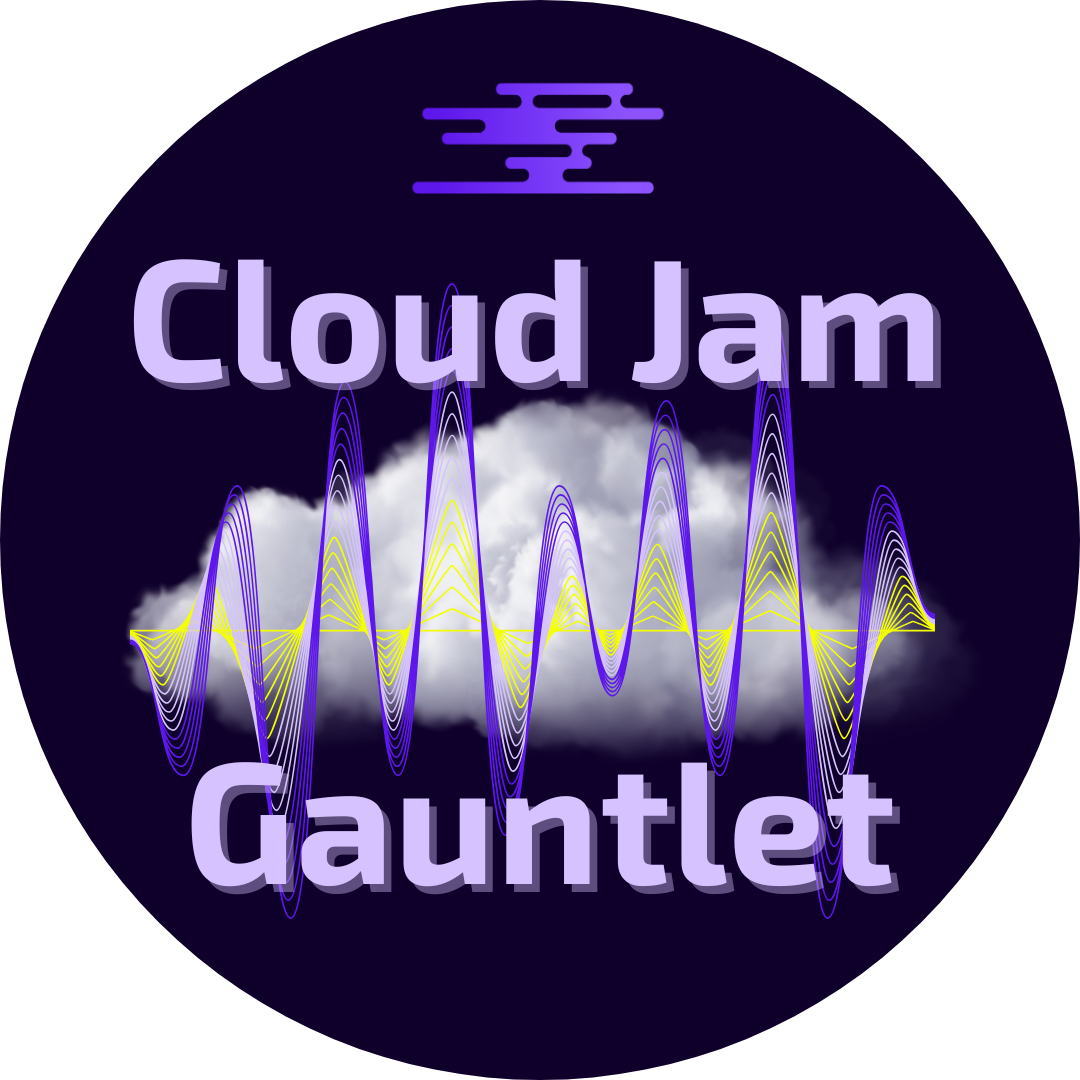
Why We Made Our Exit from VMWare & Why We Built Our Own Alternative
Share
By Nato Riley
Over the past few months, I felt like everything was finally falling into place with the business—until I opened our monthly software licensing bill and felt a wave of dread hit me.
As a business owner, I don't mind paying for value. But I do mind being blindsided by unexpected changes to licenses and pricing models.
Few things keep me up at night as a business owner:
- Am I going to have to lay someone off to keep things going?
- Can I get enough of a profit margin from customer services to make things work?
- If I experienced a surprising software bill, can I genuinely predict my quarterly and annual costs?
When trying to scale a technology-focused company with a cloud bill, it can be challenging to manage the costs versus the benefits.
The repercussions of not being able to predict licensing costs can be devastating.
Hands-on engineer? |
Exploring solutions? |

The real cost of vendor lock-in
Over the past year, Cloud Underground faced a serious challenge to continue scaling our infrastructure due to something we had not anticipated.
VMWare was purchased by Broadcom. Since we were dependent on VMWare, we suddenly fell victim to a landslide of price model changes that felt aggressive and not suitable for customers like us.
Because the price was right before, we had always done our engineering with VMWare without having to thinking about whether or not that would dramatically impact our profit margins.
I knew something needed to change when I looked at my software costs and realized that it's actually become cheaper to engineer our own alternative to what we suddenly can't afford at scale. And we can do this without making significant changes to something in our business that matters to us.
Building our way out
So did we decide to do a round of layoffs to keep VMWare?
Absolutely not.
We decided it's time for an exit.
Fortunately for my team at Cloud Underground, we have unusual capabilities and an engineering platform we already created called the Underground Nexus.
Underground Nexus was already well poised for building and hosting scalable container-based webapps. But not everyone or every project is so lucky.
Why virtual machines matter
Interestingly enough, we discovered our customer base isn't able to easily escape the need for virtual machines.
There are a lot of reasons why delivering software at scale for our customers requires virtual machines:
- Operations like manufacturing, aerospace and other industries often require compatibility with legacy technologies
- Building certain automations require a full operating system for things containers don't solve well (especially if process ID 1 is involved in troubleshooting)
- There are a lot of virtualized appliances and prebuilt resources that help business run that don't come in a containerized flavor
- Hardware acceleration and maximizing system performance
- Maximizing observability
For the most part, companies who are dependent on virtual machines usually know why they need them or what they need them for.
For the reasons listed above (and others), we always used VMWare so we could quickly integrate virtual machines as needed.
Until... The bill changed.
What we wanted that VSphere couldn't deliver
I'm the sort of business owner who deeply values financial predictability.
I don't want to have to come up with some random business gymnastics out of the blue every other month because a vendor has me locked and suddenly decides they want to play with my bottom line.
So something snapped inside me this year.
It became time to exit VMWare for something better (especially VSphere).
What I wanted this time:
- Maximum ownership with no vendor lock-in
- Just as much scale as using VSphere except fully cloud-native
- Manage virtual machines directly alongside containers
- Easily integrate graphics cards for AI engineering and graphics development
- Other niche features, such as single-root input/output virtualization (SR-IOV), needed for industrial control systems (ICS) and virtualized inputs and outputs
- Open-source licensing that's friendly for use in education
- The ability to easily spin up real to life development and demo environments that are separate from production
Talk about a long wishlist!
So I decided to add AI to see if a private AI engine could help me engineer all of this into one package so I could make my exit from VMWare.

The final results are incredible.
The AI even helped us leverage my team's advanced security skills to do engineering that would typically take years in just a month, without compromising security.
Hands-on engineer? |
Exploring solutions? |
We built CodeHaven
We are a DevSecOps-focused team, so we focus on security first. This is not vibe coding.
I might be an architect, but it's important to know that I don't do everything alone!
Laura Riley, Cloud Underground CEO, also pulled up her sleeves to learn how to write code with the help of AI.
We set up a central AI server to collaborate around.
The two of us were able to use a private local language model called Ollama Mistral to create a feedback loop between the two of us and the AI in order to troubleshoot complex challenges.
This was Laura's first time doing kernel-level code, and our process allowed her to operate like a senior-level engineer.
Why was she so motivated to step into the arena even though she is the CEO who typically handles other aspects of the business?
This new update wasn't routine engineering. This time, we wanted to do something that would be truly impactful in ways the Underground Nexus wasn't before.
We wanted to see what the future of data centers looks like with both of our own eyes, firsthand.
Using our own Underground Nexus technology, we were able to collaborate seamlessly to get to a final MVP.
We did it.
"Look it works!"

The words every principle engineer hopes to hear when hammering your face into a new concept that might not work out.
There it was.
We had a running virtual machine that was able to accelerate a graphics card as a test.
The power of superior hardware was now easily accessible over a network connection.
These are the moments we live for.
As human beings we build grand cathedrals, powerful castles, meaningful museums with valuable history out for display.
There has to be a reason for all the hard work.
With that said, we built the thing we set out to design. Something that will impact the future of Cloud Underground forever.
Teach it. Use it. Own it.
And now you're able to come along in this journey with my CEO Laura and I, it's finally time to put our hard work to use.
Laura and our open source community are pivotal parts of our engineering journey.
There is no way this could have been done alone.
Welcome to Underground Nexus version 2, with release name of CodeHaven.
The cherry on top is that we were able to add the AI we used to create our VMWare (VSphere) alternative to the Underground Nexus platform, alongside a completely scalable hypervisor engine capable of everything on my long wishlist.
So I decided to make an educational program called Cloud Jam to help others learn just how limitless the new software package we created truly is.
Cloud Jam uniquely goes over how you can create your own educational experiences for folks you train or mentor. And it's easy to deliver your amazing educational labs once complete
Cloud Jam also walks you through the same workflows we used to engineer the Underground Nexus into our own VMWare alternative with the tools we've carefully curated just for you.
What's the best part in all of this?
We made our exit from VMWare.
Now you can too.
Join the Underground.
Remember to build something special.
Hands-on engineer? |
Exploring solutions? |

